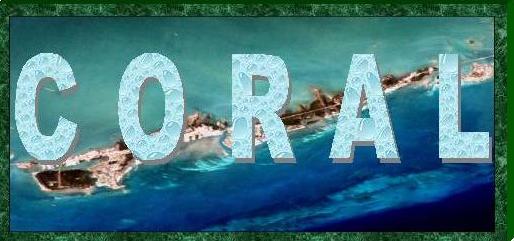
CORAL: COLLECTIVE RATIONALITY FOR THE ALLOCATION OF BITS
(Version: 1.0: CORAL.HTML v. 1.0 2002/10/4)

Table of Contents

Introduction
CORAL is a software-based implementation
of the codec specified in the paper "CORAL:
Collective rationality for the allocation of bits"by J.A
Garcia et al..
The CORAL scheme in absence of a priori knowledge
about regions of interest propose a new method for bit allocation which
can be used with reasonable internal consistency and acceptable image fidelity.
The CORAL scheme exploits a space-varying filterbank tree representation
of the image by applying a novel solution to the problem of bit allocation
among subimages: Each may benefit only on terms which permit proportionately
equal benefits to others.It is applicable in realist settings where images
may have locally varying space-frequency characteristics and without assumptions
about the subband or transform coding that is to be used to decompose the
image into several regions and how the regions are quantized individually.
The CORAL scheme is firstly based on the principles
of competitive rationality to achieve the pre-agreement position and secondly
in a general procedure for cooperative action that takes into account the
relative magnitude of the utility loss that each region suffers at a particular
allocation
The CORAL software is written
in the C programming language. This language was chosen mainly due to the
availability of C development enviroments for most of today's computing
platforms. There are two executable programs, encoder program, and decoder
program.The CORAL software handles image data in PGM format. The coding
scheme was not optimized by entropy-coding the output, and thus, the bitstreams
(put out with the coding algorithm) are binary uncoded (without entropy coding).

Examples
The next sentences show how to use the commands
coral and uncoral on the barbara image ( a 512x512 graylevels pgm image).
-
coral -i barbara.pgm -s 6 -r 0.25 -o encode.out
-
uncoral -i encode.out -r 0.25 -o R
(r = 0.25 is equivalent to a ratio of 32:1)
The following examples show images encoded/decoded
using (with entropy coding )JPEG 2000 (The JASPER Project Home Page.)
and (without entropy coding) CORAL.The images are decomposed by a 6-level 9-7 tap biorthogonal Daubechies
filter.
-
SEAPORT
-
TEIDE
-
BOAT
-
BABOON
-
BARBARA:
-
WOODSTOK:
-
BUTFISH1:

Computation Times
The computational time (in seconds) after running CORAL
for different images is showed in the next table. CORAL was run on a 1.70
GHz Pentium IV under LINUX operating system.
|
Computational time (in seconds) for CORAL
|
|
IMAGE
|
Rate (bpp)
|
TIME
|
|
SEAPORT
|
1
|
56
|
|
0.5
|
56
|
|
0.25
|
56
|
|
0.125
|
23
|
|
TEIDE
|
1
|
59
|
|
0.5
|
56
|
|
0.25
|
56
|
|
0.125
|
23
|
|
BUTFISH1
|
1
|
60
|
|
0.5
|
60
|
|
0.25
|
57
|
|
0.125
|
24
|

Related
links

Copyright
These programs are Copyright (c) 2002 by Rosa Rodriguez-Sanchez
et al. They may not be redistributed without the consent of the copyright
holders. In no circumstances may the copyright notice be removed. Permission
to use, copy, or modify this software and its documentation for educational
and research purposes only and without fee is hereby granted, provided
that this copyright notice and the original authors' names appear on all
copies and supporting documentation. For any other uses of this software,
in original or modified form, including but not limited to distribution
in whole or in part, specific prior permission must be obtained from the
authors. These programs shall not be used, rewritten, or adapted as the
basis of a commercial software or hardware product without first obtaining
appropriate licenses from authors. Each program is provided as is, without
any express or implied warranty, without even the warranty of fitness for
a particular purpose.








